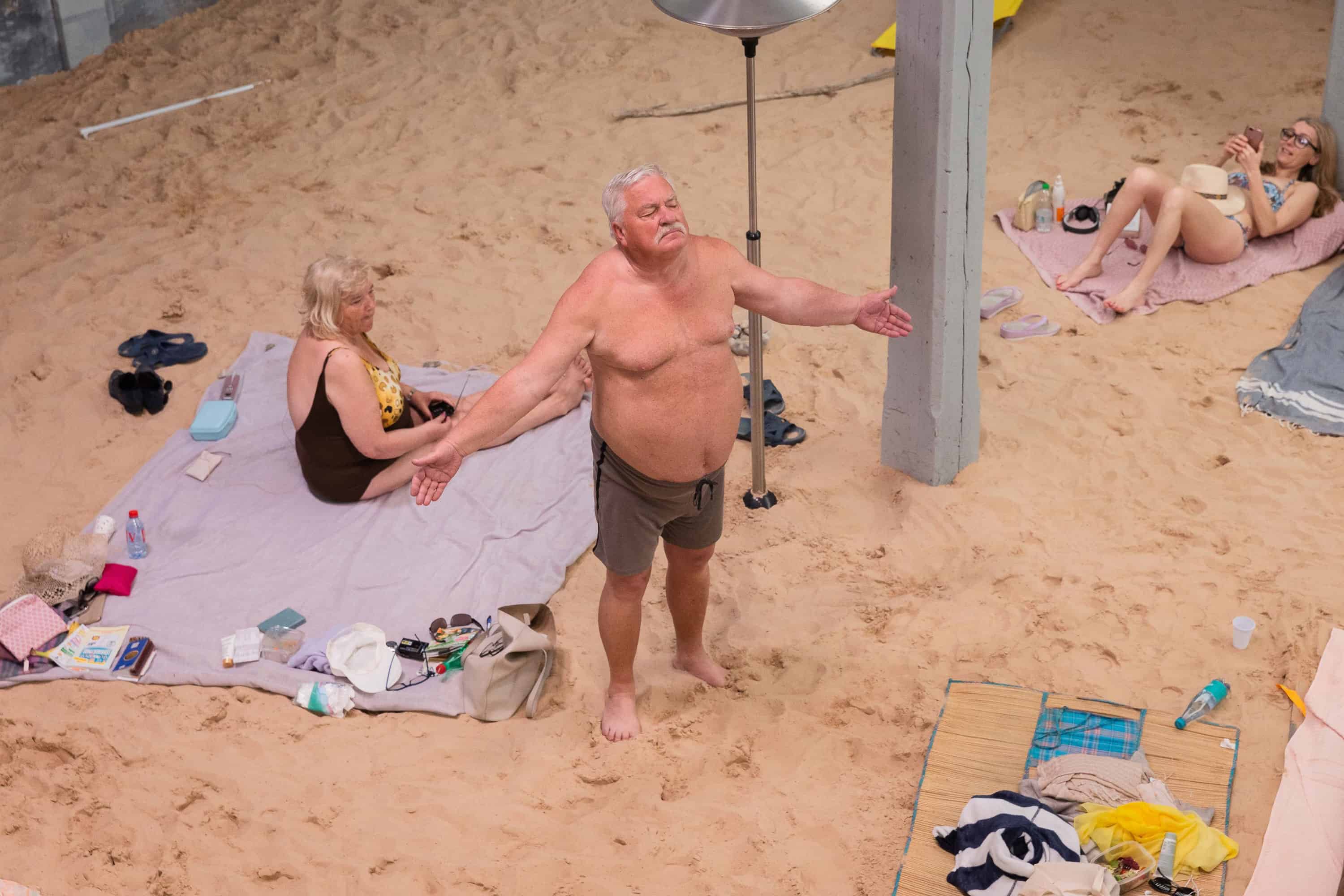
Sun&Sea (Marina), opera-performance by Rugile Barzdziukaite, Vaiva Grainyte, Lina Lapelyte at Biennale Arte 2019, Venice © Andrej Vasilenko
Numerous exhibitions revolved around the issues related to the environment and nature, in more or less overt ways. Surely, climate emergency became a hot topic not only in everyday life but art as well. It wasn’t only about the climate change though. Let’s take a closer look at events that left a mark on the art world map this year.
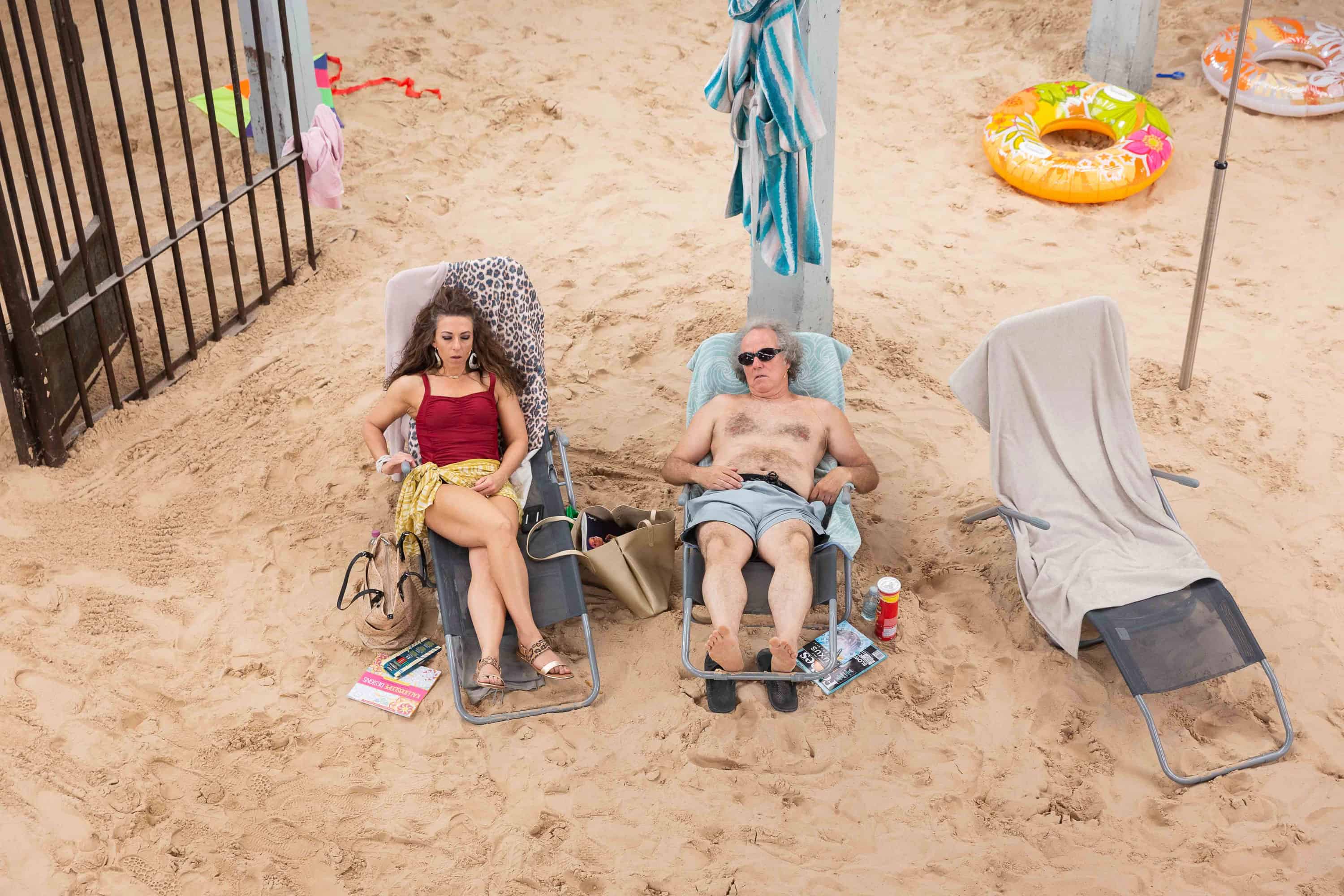
Sun & Sea (Marina), opera-performance by Rugile Barzdziukaite, Vaiva Grainyte, Lina Lapelyte at Biennale Arte 2019, Venice © Andrej Vasilenko
1. Sun & Sea (Marina)
Imagine a magnificent beach – you within it, or better: watching from above – the burning sun, sunscreen and bright bathing suits and sweaty palms and legs. The sounds of seagulls and ice cream trucks echo in the distance. Who wouldn’t like to experience that mesmerising work at the Venice Biennale this year? Lithuania has won the Golden Lion in grand style.
The pavilion presented an hour-long performance about laziness that leads to the end of the world. It was an ultimate revelation – a subtly unnerving work about climate change which was also an opera about a day at the beach. Unlike other projects that bring visitors’ attention to the ever-growing vastness of the climate crisis, Sun & Sea (Marina) focused on the trivial and mundane. It was striking to watch and listen to performers singing about their concerns about sunburn, trash not being cleaned up, excitement to show bleached whiteness of Great Barrier Reef to their children, or warm weather during Christmas. “The piece had to do with ecological issues and the Anthropocene,” Vaiva Grainytė, one of the authors, said. “But I didn’t want to be didactic because it’s such a big topic and it was important to find a subtle, romantic language.”
The simplicity of this powerful performance resulted in a remarkable and memorable work. The only challenge, however, was to get to experience it – with only one or two performances a week and a walled off location, some biennale-goers could only get a taste of it on Youtube. Anyway, Sun & Sea (Marina) has undoubtedly deserved the title of the best exhibition of 2019. Hats off to theatre director Rugilė Barzdžiukaitė, playwright Vaiva Grainytė, and composer Lina Lapelytė.
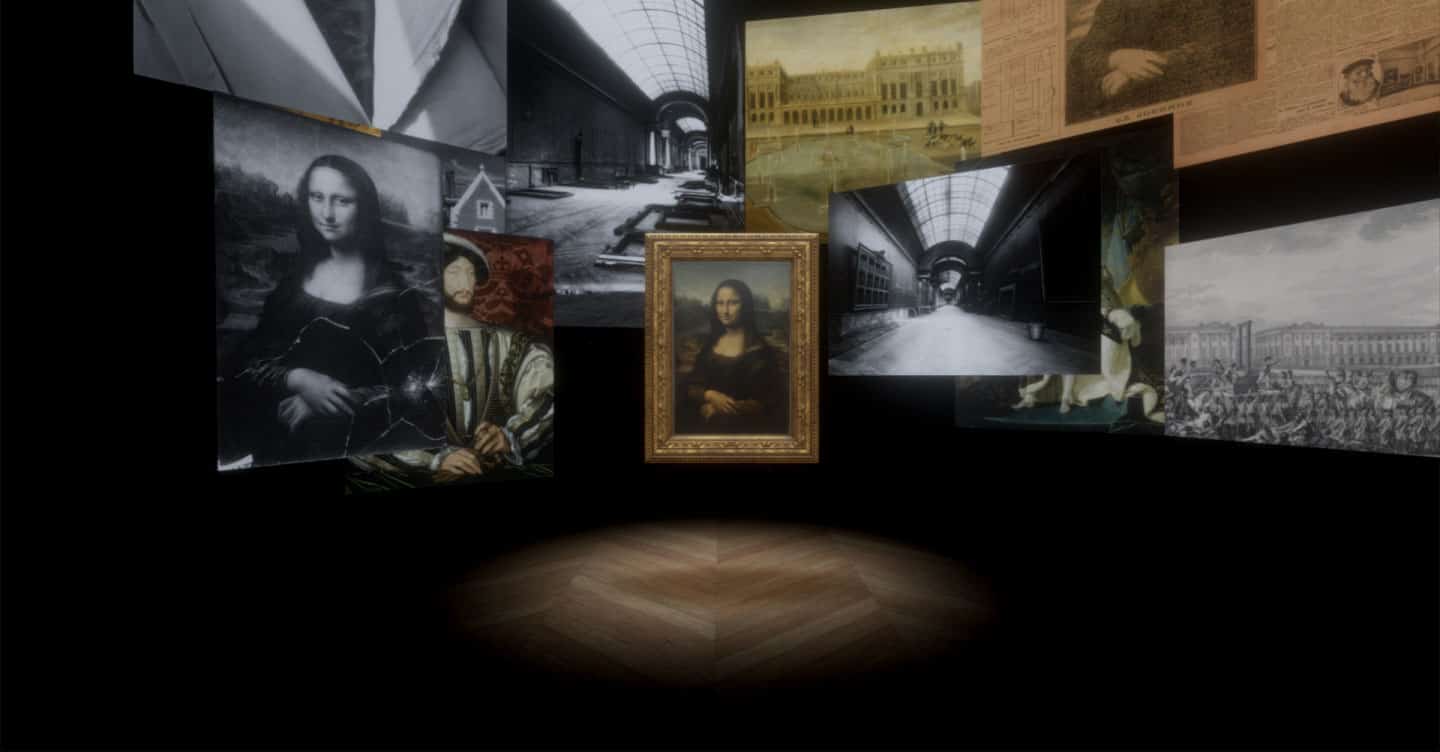
Leonardo da Vinci at the Louvre, Beyond the Glass – XP captures © Courtesy Emissive and HTC Vive Arts
2. The year of Leonardo da Vinci
Time flies, doesn’t it? Leonardo da Vinci, considered by many the ultimate Renaissance genius, combining the roles of artist, scientist and inventor, died in the French town of Amboise in 1519. This year, we have witness a wide-spread celebrations commemorating not only master’s 500th death anniversary but also, and above all, his ingenuity. From Milan, Turin, and Rome to Paris, London and New York, special exhibitions and da Vinci-focused shows took place all around the world. “There really hasn’t been anybody then or since who has combined this extraordinary genius for these totally different areas of achievement,” said Gregory Rubinstein, worldwide head of Old Master drawings at Sotheby’s. “I think that’s what’s at the heart of our fascination.”
While Leonardo spent the most productive years of his life in Milan, he was born in the little village of Vinci in Tuscany in 1452. His birthplace hosted an exhibition exploring legacy between the painter and the local surroundings that might have had influence on his future career. The artist and polymath was 64 when he was invited to France by the 23-year-old Francis I, and traveled abroad with three of his favourite paintings: the Mona Lisa, the Virgin and Child with Saint Anne, and Saint John the Baptist – all of which today hang in the Louvre museum in Paris. Presidents of Italy and France organised joint celebrations which came after months of mounting diplomatic tensions between Paris and Rome over the hardline policies of Italy’s populist government and its support for France’s anti-government yellow vest protesters. The anniversary also raised tensions over Leonardo’s works owned by France after Italy’s far-right Deputy Prime Minister Matteo Salvini said the Mona Lisa should be brought home to Rome. He later clarified that the comment was only a joke though.
In October, the Louvre in Paris opened the most comprehensive exhibition of Leonardo’s works. There are over 120 paintings, drawings, manuscripts, sculptures, and objects d’arte on display from the most prestigious European and American institutions. The Louvre Museum also collaborated with HTC Vive Arts to provide a VR experience like no other. Mona Lisa: Beyond the Glass cuts away the crowds and allows visitors to get up close to learn more about Mona Lisa herself, beyond the myths and legends that have surrounded her for nearly 500 years. Who wouldn’t like to dive into Mona Lisa’s universe and her enigmatic smile? This unmissable show has been drawing record crowds every single day and will continue through February 2020.
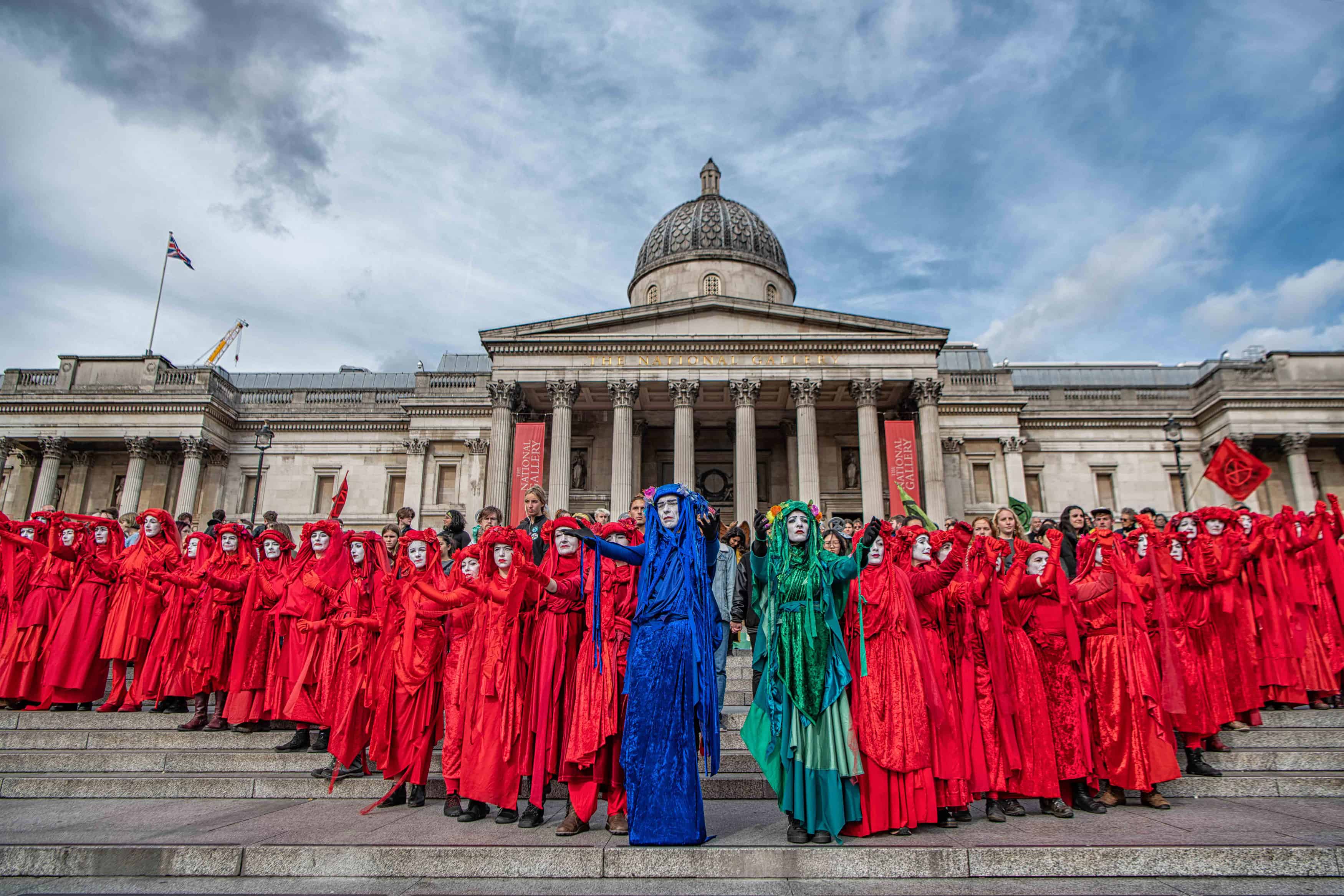
Red Rebel Brigade, Extinction Rebellion, Courtesy of Guy Reece Copyright Striking Faces
3. Art Projects by XR
Time has almost entirely run out to address the ecological crisis which is upon us. Societal collapse and mass death are seen as inevitable by scientists and other credible voices, with human extinction also a possibility, if rapid action is not taken. Extinction Rebellion believes it is a citizen’s duty to rebel. In 2019, they not only staged peaceful civil disobedience protests around the world but also created a programme of public art activities. It was made possible thanks to the generosity of hundreds of artists – from art students to some of the most established professionals – and an army of community facilitators and producers, who tirelessly worked on a daily basis to guarantee the smooth running of a couple of thousands of events.
Through art, XR aims to create a more loving, compassionate and creative society in a non-violent and healthy environment. Their art aims to educate, entertain, inspire and de-escalate. From a non-binary giant pink octopus roaming the streets of London to a series of stunning flags and a performance by a group of druids dressed in blood red with their faces painted in white, XR created art projects in decentralised workshops run by rebels of all ages and backgrounds.
Clive Russell, XR Arts Group co-founder addsed: “Our design output is strictly non-commercial and dedicated to developing creativity. By allowing space for thought and reflection XR Art Group has re-invented the protest art space. Our ground-breaking Design Programme is now being used and developed worldwide – who knows what will happen next…”
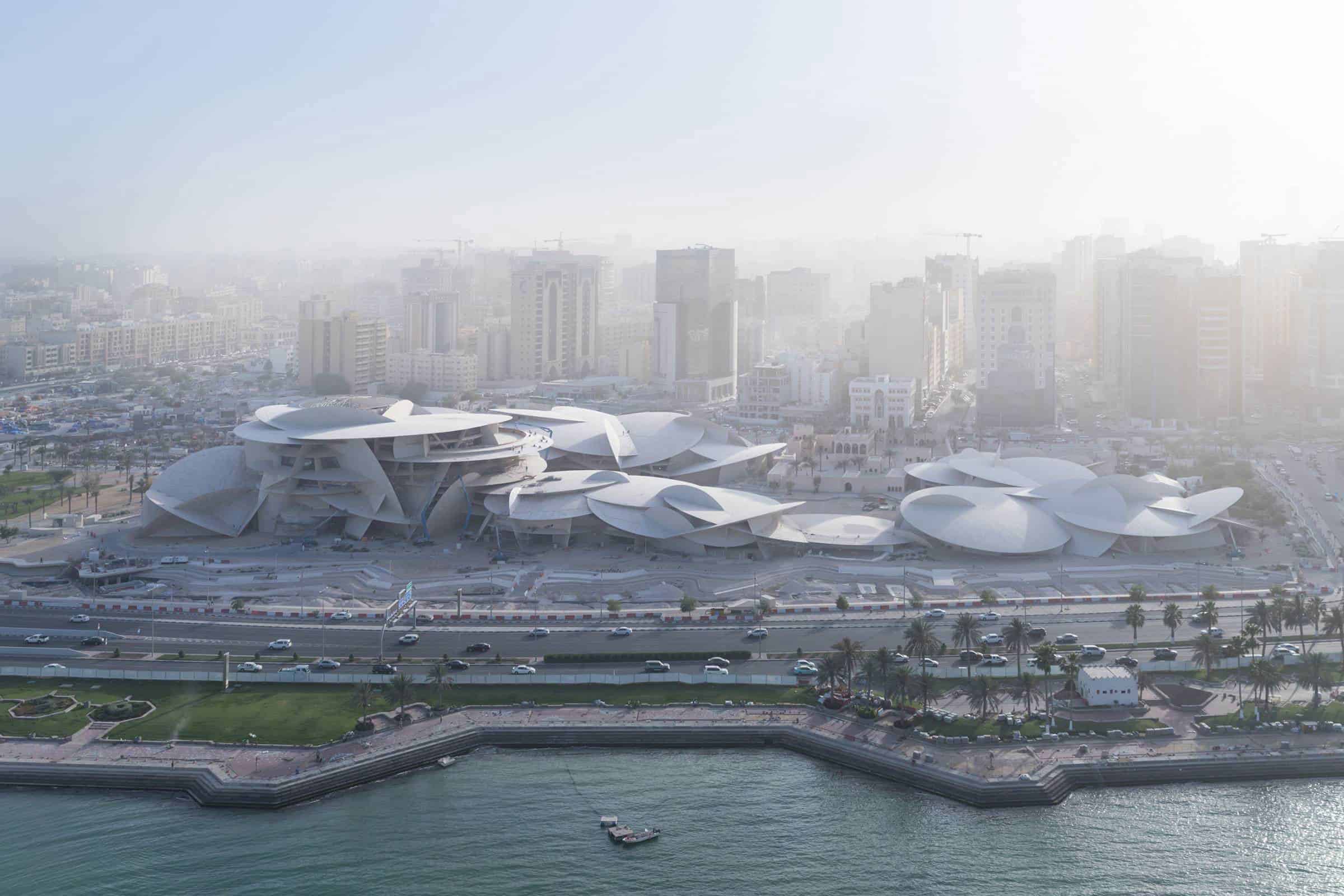
Aerial view of the National Museum of Qatar designed by French architect, Jean Nouvel, Photo Iwan Baan
4. National Museum of Qatar
The list of the best museums in the world has just got longer. Designed by French architect, Jean Nouvel, the new National Museum of Qatar has made a dramatic addition to the Doha landscape and the map of world-class art venues. This spectacular building boasts curved disks, eye-catching intersections, and cantilevered angles — all inspired by the local desert rose. Designed to be both immersive and experiential, the museum gives voice to the unique story of Qatar and its people from earliest times to the present day and onwards towards its future.
Stunning architecture goes hand in hand with extraordinary exhibits. Organised in three “chapters” — Beginnings, Life in Qatar, and The Modern History of Qatar, each theme is presented across eleven highly individual galleries. Qatar has a long maritime tradition and the museum is celebrating this through its commitment to preserving and better understanding the hand-built wooden dhows that were once Doha’s lifeblood. These boats enabled fishing, trading and notably the collection of precious pearls. Visitors are also invited to see over 1.5 million Gulf pearls hand-embroidered on the renowned Pearl Carpet of Baroda.
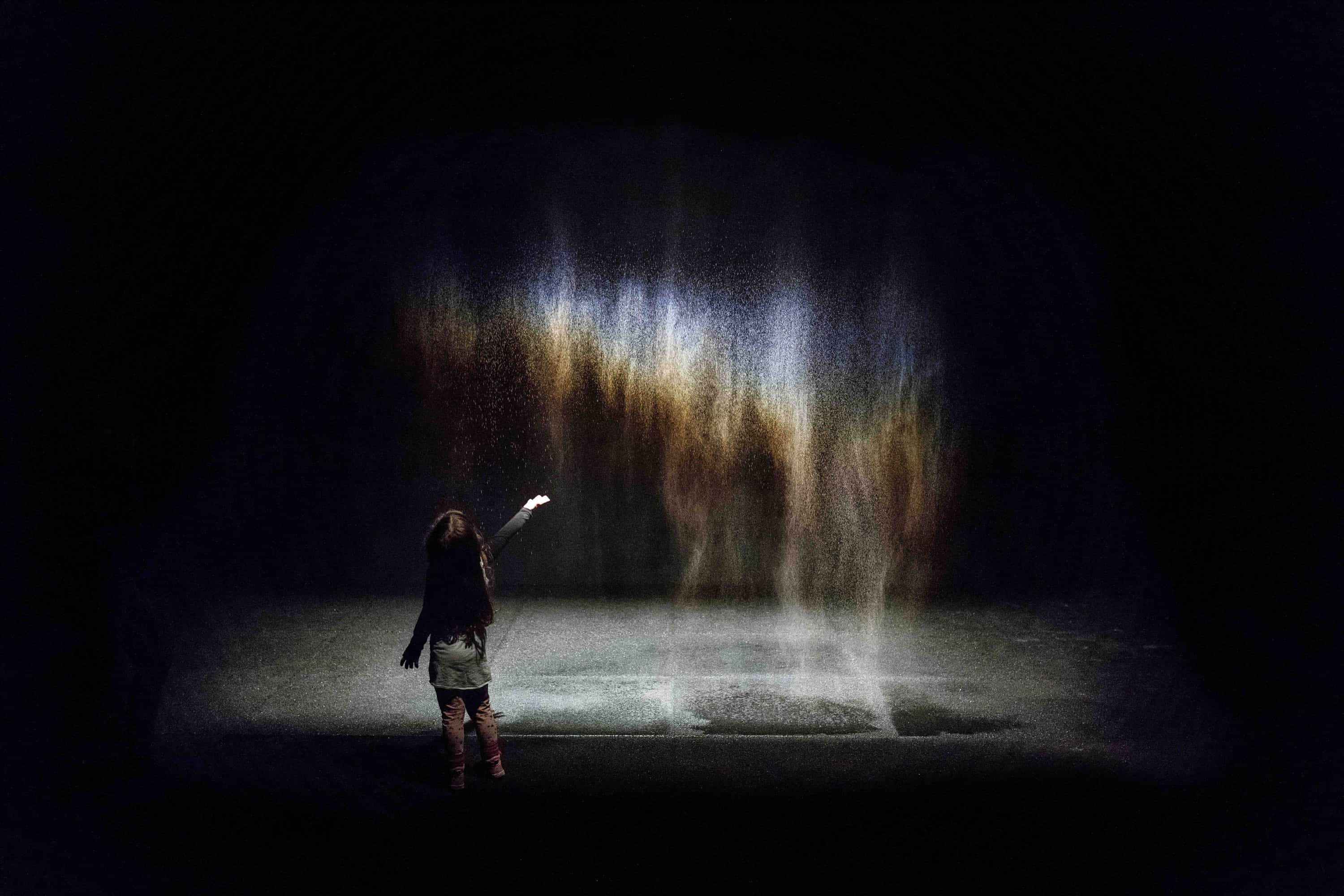
Olafur Eliasson, Beauty, 1993, Spotlight, water, nozzles, wood, hose, pump, Installation view at Moderna Musset, Stockholm, 2015, Photo Anders Sune Berg, Courtesy of the artist; neugerriemschneider, Berlin; Tanya Bonakdar, New York_Los Angeles
5. Olafur Eliasson: In Real Life
It was one of the most anticipated exhibitions of 2019. Olafur Eliasson, the prolific Danish-Icelandic artist best known for his giant immersive projects, brought a huge retrospective to Tate Modern. His pieces were placed not only throughout exhibition spaces but also gallery’s corridors and inside lifts. Even cafeteria’s decor changed and all the dishes on its menu were re-design in collaboration with Olafur’s kitchen chefs.
Eliasson’s work is hypnotising, poetic, and powerful. He is a master of monumental installations and unquestionable pioneer of transforming vast spaces into awe-inspiring, jaw-dropping wonderlands: The Weather Project inside Tate’s Turbin Hall (2003), Riverbed at the Luisiana Museum of Modern Art (2014) or the Palace of Versailles (2016), to name just a few. His retrospective at Tate, however, fell short of expectations and failed to capture his spirit. It felt as if somebody created a survey of various mock-ups for yet another gigantic site-specific show and placed them haphazardly in a white cube environment. It was indeed impressive to see what his studio (which employs around one hundred people) have produced over the years. The visitor experience, however, left much to be desired. Overcrowded rooms, endless queues, installations not working properly, and countless barriers in front of artworks that were meant to be touched and experienced through all the senses left visitors puzzled, if not disappointed. This long-awaited exhibition felt disjointed and thin with its energy lost in its vastness.
Let’s hope Olafur will soon be back with one of his signature, truly immersive projects that gives you space to contemplate and leaves you speechless. When the magnitude of the experience is not measured by the number of objects on display but how and what it makes you feel and what stays with you once you’re out of that beguiling environment.

Comedian by Maurizio Cattelna, Emmanuel Perrotin Gallery, Art Basel Miami Beach 2019
6. Comedian
The year finished on a lighter note, with Maurizio Cattelan marking his first major debut at an art fair in over 15 years. The author of America, a fully functional toilet made of 18-karat solid gold, made a splashing comeback at Art Basel Miami Beach. Known for his hyper-realistic sculptures lampooning popular culture and offering a wry commentary on society, power, and authority, the Italian artist presented Comedian, a surprisingly simple piece (in edition of 3). The work comprised a real banana affixed to the wall with a piece of a duct tape. Priced at £120k, it won instagram likes, visitors laughter, and front pages around the world.
On the penultimate day of the fair, David Datuna spiced up the art weekend and casually ate the banana in front of bewildered selfie-seekers. “I call the performance, ‘Hungry Artist,’ because I was hungry and I just ate it,” the New York-based artist said at a press conference following the incident. Whatever your take on that potassium-rich artwork and responses to it is, Maurizio has once again become the most talked about artist in the world. You can still follow the Comedian’s adventures on @cattelanbanana and always create your own version.
The only question that remains is why it was the gallery of Emmanuel Perrotin and not Massimo De Carlo that presented Comedian? After all, it was the latter gallerist who got ducked-taped to a wall by Cattelan in 1999. That piece was called A Perfect Day and existed solely on the evening of the opening. The public could witness the world-renowned Massimo De Carlo of Milan literally attached to the wall by adhesive tape, that almost entirely covered him, like a grotesque but not less striking crucifixion.







